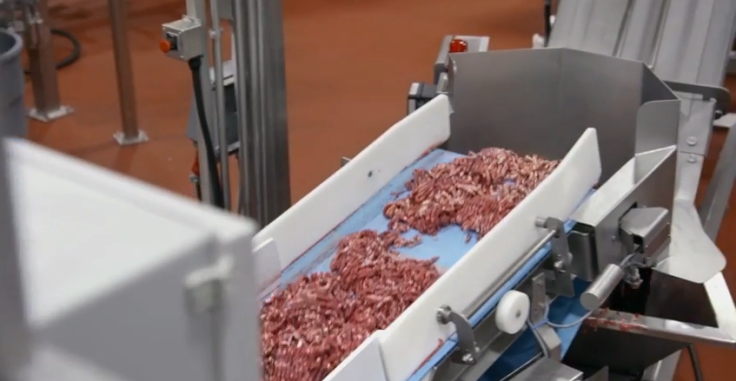McDonald's Addresses Pink Slime Myth With Behind-The-Scenes Food Plant Tour

The world’s biggest hamburger chain has been under the public eye for its delicious yet unusual hamburger patties that have been shown to stay intact on the counter for years. McDonald’s has been at the center of unappetizing rumors and urban myths about using lean, finely textured beef, commonly known as “pink slime,” in some of its most popular items like Happy Meals, Big Macs, and chicken nuggets. So, the fast food giant took an unprecedented step to give its customers happier meals by allowing cameras to capture its beef production line process as part of its “Our Food. Your Questions” campaign.
Grant Imahara, former "MythBusters" co-host, went behind-the-scenes of the franchise’s USA beef supplier, Cargill, in Fresno, Calif., to answer one of customers’ constant doubts and questions: “Is McDonald’s beef real?” The webisode takes Imahara to the Cargill plant where the beef supplier shows what goes into the chain’s hamburger patties. Cargill processes 400,000 pounds of meat per day and confirmed its burgers are, in fact, 100 percent pure beef. The simple process was described as “beef in and beef out, nothing else is added,” Rickette Collins, director of strategic supply at McDonald’s told Imahara in the video.
The hamburger patties go through a flash frozen process after they have been grinded to retain rather than lose flavor. These burgers are then placed in a box and taste tested by Manoah Crane, a food safety, quality and regulatory technician at Cargill. The Cargill plant promises there are no fillers, no preservatives, no additives — and no pink slime.
While there may be no evidence of pink slime, this doesn’t mean McDonald’s burger patties are 100 percent safe for consumption. The fast food chain confesses to using hormones on its website, saying, “Most of the cattle we get our beef from are treated with added hormones, a common practice in the U.S. that ranchers use to promote growth.” The growth hormones, known as anabolic steroids, can have drastic effects as they have the potential to change the hormone balance in beef-eating humans. The European Union has banned the use of growth hormones in cattle because it can have developmental, neurobiological, genotoxic and carcinogenic effects on humans.
The buns and rolls on which McDonald’s hamburger patties are served on contain the “yoga mat” chemical azodicarbonamide (ADA). The Environmental Working Group has found this chemical could increase the risk of health problems such as asthma and skin irritation. Earlier this year, Subway, the sandwich fast food chain, removed ADA from its breads after receiving backlash from a petition that urged the chain to remove the chemical.
McDonald’s defends its stance on using ADA by saying on its website, “There are varied uses for azodicarbonamide, including in some non-food products, such as yoga mats. As a result, some people have suggested our food contains rubber or plastic, or that the ingredient is unsafe. It's simply not the case. Think of salt: the salt you use in your food at home is a variation of the salt you may use to de-ice your sidewalk. The same is true of ADA — it can be used in different ways.”
The verdict is your hamburger may not have pink slime or worms, but it does contain growth hormones and is accompanied the yoga mat chemical, which can take a significant toll on your health.



























